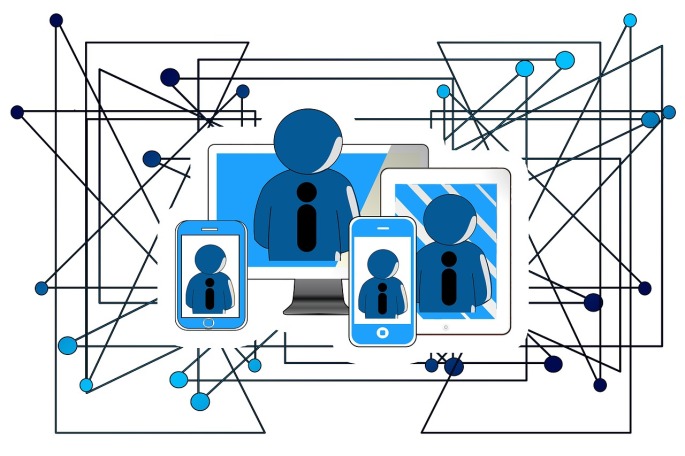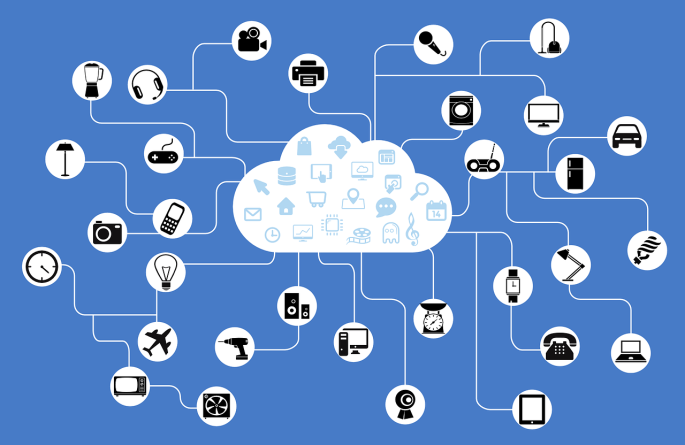Leading research and advisory company Gartner recently wrapped up its 2017 Security and Risk Management Summit. A premier gathering of leaders and executives in the fields of security, risk management, and business continuity management, the annual summit focuses on helping businesses reinvent and refine their thinking on how to handle security and risk in the digital age.
In this era of ransomware attacks and privacy breaches, the issue of cybersecurity was unsurprisingly one of the defining themes of this year’s summit. In a presentation given on the summit’s first day, Gartner analyst and research vice president Earl Perkins outlined five key trends that are expected to shape the cybersecurity landscape in 2017 and 2018.
-
Changing skills and organizational requirements
 Cybersecurity already has a zero percent unemployment rate, and that talent shortage is only expected to grow as the field evolves and the need for new skill sets arises. Data management in particular will become a significant challenge. The next three to five years alone will see organizations generating more data than they ever have before, and that unprecedented volume of information will require highly specialized handling. The need for new skills in data science and analytics will continue to grow, and the industry’s major concerns will include areas like data classes, data governance, and artificial security intelligence. To keep pace with this next phase of cybersecurity, adaptability will be essential, both for organizations and for individuals.
Cybersecurity already has a zero percent unemployment rate, and that talent shortage is only expected to grow as the field evolves and the need for new skill sets arises. Data management in particular will become a significant challenge. The next three to five years alone will see organizations generating more data than they ever have before, and that unprecedented volume of information will require highly specialized handling. The need for new skills in data science and analytics will continue to grow, and the industry’s major concerns will include areas like data classes, data governance, and artificial security intelligence. To keep pace with this next phase of cybersecurity, adaptability will be essential, both for organizations and for individuals.
-
Cloud security as a top priority
Now that cloud computing has become a mainstream activity and the cloud environment is reaching maturity, the cloud is becoming a valuable—and potentially vulnerable—security target. The entire industry will need to work together to prevent a tragedy of the commons in which the stability and security of a shared cloud service is threatened by too many demands from too many different companies, without the corresponding sharing of responsibility for its upkeep. In addition, to keep data safe in the cloud environment, companies will need to make difficult decisions about who they can and cannot trust. Therefore, they should develop rigorous security guidelines for both private and public cloud use, and put in place a model to drive informed decisions concerning cloud risk.
-
Shifting focus away from protection and prevention
One of the biggest cybersecurity trends discussed at the Gartner summit is one that may be the most difficult for security professionals to accept: the idea that it simply isn’t possible to stop every threat. Executives need to accept that fact and focus their resources on what they can actually accomplish. As Earl Perkins argued in his presentation, it is very difficult to stop a dedicated, well-financed actor who is after something specific in an organization from getting what they want, especially as they can always resort to a company’s weakest link: people. Instead, enterprises should adapt their security setup to focus not on protection, but on detection, response, and remediation, which Perkins described as the new frontier for today’s cybersecurity fight. Indeed, as technology evolves further, we can even expect to see the focus shift yet again from detection and response to prediction, i.e., heading off threats before they even happen.
-
The development operations center as the leader of application and data security

Despite the fact that there is a new window of opportunity in application security, the associated expense makes most enterprises reluctant to take advantage of it. However, there’s never been a better time to bring together development and operations, and to figure out the best way not only of evaluating the value of security, but of explaining that value to the business. The anticipated result is a necessary shift from DevOps to DevSecOps. Now that an almost endless connection between development and operations is possible due to the drastically shortened time to market, focusing on security within the DevOps context, rather than running each element as an isolated unit, is the essential next step. If enterprises are not working with an internal DevOps team, it’s critical to have a conversation with their service provider about the kind of security they offer.
-
Digital ecosystems and next-generation security
Safety, reliability, and privacy are the key tenets of cybersecurity, but the interesting thing happening now is that these issues are no longer confined solely to the digital realm. As a result of the rapid rise of the Internet of Things and its millions of connected devices, cybersecurity is now directly linked to the physical safety of people and environments. Bluntly put, when you’re talking about things like self-driving cars or sensors that monitor health conditions and give alerts when it’s time to take medication, enterprises that don’t have a sufficient handle on cybersecurity may be putting people’s lives at risk. Therefore, the next generation of cybersecurity won’t just be about the digital world, but the physical one as well.



 Digital transformers—These traditional businesses have successfully evolved to take advantage of emerging technologies; for the most part, they are creating new sources of value for their customers and are implementing competitive strategies that may take them beyond conventional industry boundaries. Companies like Burberry, L’Oréal, and Ford are good examples of digital transformers.
Digital transformers—These traditional businesses have successfully evolved to take advantage of emerging technologies; for the most part, they are creating new sources of value for their customers and are implementing competitive strategies that may take them beyond conventional industry boundaries. Companies like Burberry, L’Oréal, and Ford are good examples of digital transformers. Augmented and virtual reality—Augmented reality (AR) is a process by which digital information and experiences are layered on top of the physical world, while virtual reality (VR) goes one step further, creating a completely new, interactive digital environment. AR in particular has strong potential to dramatically alter the customer experience, especially in retail environments. For example, the home improvement retail chain Lowe’s recently released an AR “mapping” app that helps customers search for products, add them to a shopping list, and then easily navigate their way through the store to find and collect the items.
Augmented and virtual reality—Augmented reality (AR) is a process by which digital information and experiences are layered on top of the physical world, while virtual reality (VR) goes one step further, creating a completely new, interactive digital environment. AR in particular has strong potential to dramatically alter the customer experience, especially in retail environments. For example, the home improvement retail chain Lowe’s recently released an AR “mapping” app that helps customers search for products, add them to a shopping list, and then easily navigate their way through the store to find and collect the items.




 Hosted by Cisco in late May 2017, the fourth installment of the
Hosted by Cisco in late May 2017, the fourth installment of the 

 As the business world becomes increasingly driven by digital developments, two distinct categories of CEO mindsets are emerging. One is the traditionalist: these executives are strongly on the side of the incumbent marketplace, of letting solid business cases determine investment strategies, and of prioritizing predictability over speed and innovation. The other is the digital market disruptor: the type of leader who believes that innovation can lead to big wins, that embracing failure is an inevitable part of risk management, and that innovation and speed should be prioritized over predictability.
As the business world becomes increasingly driven by digital developments, two distinct categories of CEO mindsets are emerging. One is the traditionalist: these executives are strongly on the side of the incumbent marketplace, of letting solid business cases determine investment strategies, and of prioritizing predictability over speed and innovation. The other is the digital market disruptor: the type of leader who believes that innovation can lead to big wins, that embracing failure is an inevitable part of risk management, and that innovation and speed should be prioritized over predictability.

 Sutcliffe’s article refers to the “tyranny of the ‘ology’”—the danger of becoming overly fixated on the brand of a particular new technology rather than on the science behind it. Brands like nanotechnology or synthetic biology, in particular, have become popular buzzwords that organizations use to attract funding and academic investment, as well as to demonstrate their commitment to innovation. However, development can be compromised when the glamor surrounding a new technology, rather than how well it works or what risks are associated with it, drives discussions.
Sutcliffe’s article refers to the “tyranny of the ‘ology’”—the danger of becoming overly fixated on the brand of a particular new technology rather than on the science behind it. Brands like nanotechnology or synthetic biology, in particular, have become popular buzzwords that organizations use to attract funding and academic investment, as well as to demonstrate their commitment to innovation. However, development can be compromised when the glamor surrounding a new technology, rather than how well it works or what risks are associated with it, drives discussions. Yes, new technologies can sometimes prove controversial, but when scientists launch their ideas from a place of defensiveness and confrontation, they often spark the very problems they are trying to avoid. Society does not necessarily have a widespread fear of technology itself. Instead, it has a widespread desire for engaged and collaborative discussion about what the technology is being developed for and what problems it will help solve. While it’s certainly important to think about how to address a potential backlash, imagining that such a backlash is already occurring when it isn’t can obstruct both developmental productivity and useful, forward-thinking societal dialogue.
Yes, new technologies can sometimes prove controversial, but when scientists launch their ideas from a place of defensiveness and confrontation, they often spark the very problems they are trying to avoid. Society does not necessarily have a widespread fear of technology itself. Instead, it has a widespread desire for engaged and collaborative discussion about what the technology is being developed for and what problems it will help solve. While it’s certainly important to think about how to address a potential backlash, imagining that such a backlash is already occurring when it isn’t can obstruct both developmental productivity and useful, forward-thinking societal dialogue.
 To help incumbents clarify the sources of potential digital disruption, as well as the conditions under which it flourishes, McKinsey analysts have returned to the fundamental economic mechanisms of supply, demand, and market dynamics. In other words, the vital thing to understand about digitization is that it is disruptive to industries and incumbents when it results in a critical change to supply or demand (or both together).
To help incumbents clarify the sources of potential digital disruption, as well as the conditions under which it flourishes, McKinsey analysts have returned to the fundamental economic mechanisms of supply, demand, and market dynamics. In other words, the vital thing to understand about digitization is that it is disruptive to industries and incumbents when it results in a critical change to supply or demand (or both together).

 For the most part, companies are no longer wrestling, as they once did, with the question of whether or not they need a senior executive in a
For the most part, companies are no longer wrestling, as they once did, with the question of whether or not they need a senior executive in a 

 For most traditional organizations, revamping operations to meet these customer expectations doesn’t simply involve automating businesses processes, it involves reinventing them. Forward-thinking organizations are not just leveraging new technologies to perform existing business processes more efficiently, they are also challenging all assumptions about those existing processes and rebuilding them from the ground up with cutting-edge digital tools.
For most traditional organizations, revamping operations to meet these customer expectations doesn’t simply involve automating businesses processes, it involves reinventing them. Forward-thinking organizations are not just leveraging new technologies to perform existing business processes more efficiently, they are also challenging all assumptions about those existing processes and rebuilding them from the ground up with cutting-edge digital tools. Some organizations approach business process digitization gradually—testing the waters, as it were, by working on one particular stage of the customer experience at a time. However, while this can certainly boost efficiency in key areas and address some of the most urgent customer issues, this kind of segmented digitization will never be able to deliver the truly seamless experience that today’s customers demand.
Some organizations approach business process digitization gradually—testing the waters, as it were, by working on one particular stage of the customer experience at a time. However, while this can certainly boost efficiency in key areas and address some of the most urgent customer issues, this kind of segmented digitization will never be able to deliver the truly seamless experience that today’s customers demand.
 One of the biggest divides in the digital economy is the one between the disruptors and the disrupted. Many companies are able, at least in some measure, to keep pace with the wave of digital disruption once it has swept over their industry, but only some have the vision needed to lead, rather than follow, that disruption. These forerunners make the digital imperative a top C-suite priority rather than relegating it to IT or another siloed department, and they work to define both a clear target for their digital strategy and a direct and actionable process for reaching that target. In other words, they view digitization as a holistic undertaking. As digital solutions are choreographed and coordinated across the value chain, the entire organization is empowered to experiment and innovate, and products and services are improved in a continuous cycle of iterations and feedback. Key to all these efforts is an appetite for risk; digital forerunners aren’t afraid of failure, because failure is what tells them where they need to do better.
One of the biggest divides in the digital economy is the one between the disruptors and the disrupted. Many companies are able, at least in some measure, to keep pace with the wave of digital disruption once it has swept over their industry, but only some have the vision needed to lead, rather than follow, that disruption. These forerunners make the digital imperative a top C-suite priority rather than relegating it to IT or another siloed department, and they work to define both a clear target for their digital strategy and a direct and actionable process for reaching that target. In other words, they view digitization as a holistic undertaking. As digital solutions are choreographed and coordinated across the value chain, the entire organization is empowered to experiment and innovate, and products and services are improved in a continuous cycle of iterations and feedback. Key to all these efforts is an appetite for risk; digital forerunners aren’t afraid of failure, because failure is what tells them where they need to do better. A seamless, omni-channel experience is something that every customer wants and that digital forerunners deliver. Digital forerunners know that customers today expect to be able to easily navigate a fluid ecosystem that minimizes friction at every touchpoint. Customers certainly care about the product or service itself, but they also put value on other, less tangible things, such as whether they can get the product right now, how it will integrate with products they already own, and whether they can be sure that the product featured on the website is the same one they’ll find in the store. Digital forerunners understand these values, and they work to create an integrated strategy that blends physical and digital assets and touchpoints to deliver the most convenient, differentiated, and personalized customer experience possible.
A seamless, omni-channel experience is something that every customer wants and that digital forerunners deliver. Digital forerunners know that customers today expect to be able to easily navigate a fluid ecosystem that minimizes friction at every touchpoint. Customers certainly care about the product or service itself, but they also put value on other, less tangible things, such as whether they can get the product right now, how it will integrate with products they already own, and whether they can be sure that the product featured on the website is the same one they’ll find in the store. Digital forerunners understand these values, and they work to create an integrated strategy that blends physical and digital assets and touchpoints to deliver the most convenient, differentiated, and personalized customer experience possible.